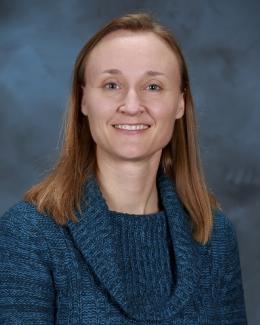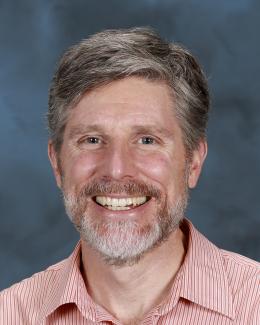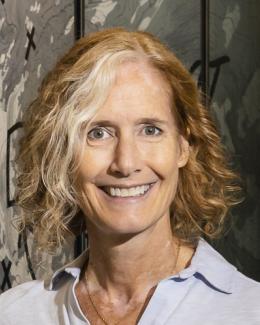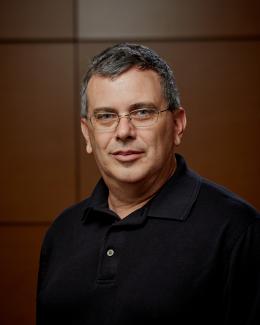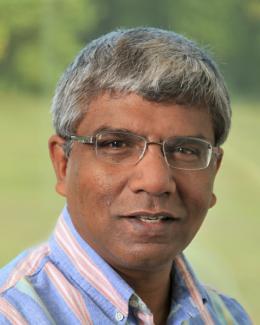E3SM: DOE’s New, State-of-the-Science Earth System Model
April 24, 2018 – A new earth modeling system will use advanced computers and have weather scale resolution to simulate aspects of Earth’s variability and anticipate decadal changes that will critically impact the United States’ energy sector.
The Energy Exascale Earth System Model, or E3SM, release will include model code and documentation, as well as output from an initial set of benchmark simulations useful to the broader scientific community engaged in a myriad of energy research endeavors.
To address the diverse critical factors impacting the U.S. energy sector, the E3SM project is dedicated to answering three overarching scientific questions that drive its numerical experimentation initiatives: Water cycle, biogeochemistry and cryosphere systems.
A research team led by Peter Thornton of Oak Ridge National Laboratory’s Environmental Sciences Division contributed to the development of E3SM’s land model, expanding the biogeochemistry capabilities to include the key nutrient, phosphorous, and allowing coupled simulations of phosphorous, carbon and nitrogen cycles.
“By integrating more process details, we’re able to improve predictions of future feedbacks between ecosystems, human systems and climate systems,” Thornton said.
In collaboration with scientists across the national laboratory system, Kate Evans who leads the computational earth sciences group at Oak Ridge National Laboratory analyzed the atmospheric model dynamics and led the development of a tool to assist scientists with the use of E3SM. The A-PRIME tool allows researchers to monitor critical metrics for a simulation without pausing the workflow. This capability provides an opportunity to adjust simulation parameters or restart a run while conserving computational hours.
“This model has the capability to run climate-length simulations at the same resolution that weather forecasters use for the 10-day outlook,” Evans said. “We know there are feedbacks in atmospheric dynamics happening at the weather and climate time and space scales. With new computational resources now being deployed at the Oak Ridge Leadership Computing Facility, we will have the computing power to systematically examine these dynamics.”
The Earth, with its numerous interactions among and within the atmosphere, oceans, land and ice components, presents an extraordinarily complex system for investigation. Earth system simulation involves solving approximations of physical, chemical and biological governing equations on spatial grids that are as fine in scale as computing resources will allow.
The E3SM project will reliably simulate aspects of earth system variability and project changes that will critically impact the U.S. energy sector in the near future. These factors include regional temperatures, water availability, sea-level rise and extreme events like floods and droughts, electric grid reliability, and effects on power plants, bioenergy and infrastructure.
The project’s goal is to develop an earth system model, or ESM, which has not yet been possible because of limitations in current computing technologies.
“The quality and quantity of observations really makes us constrain the models,” said David Bader, LLNL scientist and lead of the E3SM project. “With the new system, we’ll be able to more realistically simulate the present, which gives us more confidence to simulate the future.”
Simulating atmospheric and oceanic fluid dynamics with fine spatial resolution is especially challenging for ESMs. Yet, a long-term aim of the E3SM project is to use exascale machines, a computing system capable of carrying out a billion billion calculations per second. This represents a thousand-fold increase in performance over that of the most advanced computers from a decade ago.
“This model adds a much more complete representation between interactions of the energy system and the earth system,” Bader said. “The increase in computing power allows us to add more detail to processes and interactions that results in more accurate and useful simulations than previous models.”
In the E3SM, all model components (atmosphere, ocean, land, ice) are able to employ variable resolution to focus computing power on fine-scale processes in regions of particular interest. This is implemented using advanced mesh-designs that smoothly taper the grid-scale from the coarser outer region to the more refined region.
The E3SM project is supported by the Department of Energy's Office of Science in the Biological and Environmental Research Office. The E3SM project includes more than 100 scientists and software engineers at multiple DOE Laboratories as well as several universities; the DOE laboratories include Argonne, Brookhaven, Lawrence Livermore, Lawrence Berkeley, Los Alamos, Oak Ridge, Pacific Northwest and Sandia national laboratories.
In addition, the E3SM project also benefits from-DOE programmatic collaborations including the Exascale Computing Project and programs in scientific discovery such as Atmospheric Radiation Measurement, International Land Model Benchmarking Project, and Next Generation Ecosystem Experiments for the Arctic and the Tropics, known as NGEE-Arctic and NGEE-Tropics.
For information, visit http://e3sm.org.
ORNL is managed by UT-Battelle for the Department of Energy's Office of Science, the single largest supporter of basic research in the physical sciences in the United States. DOE’s Office of Science is working to address some of the most pressing challenges of our time. For more information, please visit http://energy.gov/science.
